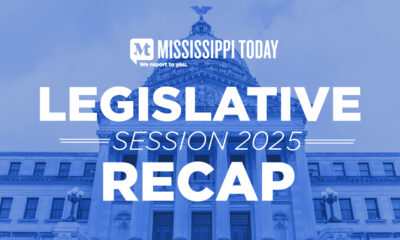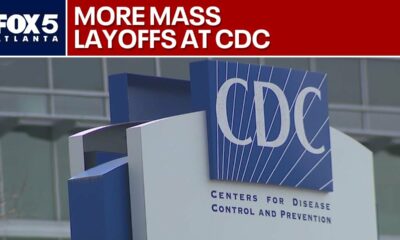Kaiser Health News
An Arm and a Leg: John Green vs. Johnson & Johnson (Part 1)
Dan Weissmann
Wed, 11 Oct 2023 09:00:00 +0000
Why is treating drug-resistant tuberculosis so expensive?
Pharmaceutical giant Johnson & Johnson’s patents on a drug called bedaquiline have a lot to do with it.
In this episode of “An Arm and a Leg,” host Dan Weissmann speaks with writer and YouTube star John Green about how he mobilized his massive online community of “nerdfighters” to change the company’s policy and help make the drug more accessible.
But not every lifesaving drug has a champion with a platform as big as Green’s. Drug companies’ patents limit access to affordable treatments as well.
Weissmann also speaks with drug-patent expert Tahir Amin about how companies keep their drugs under patent for so long and the legal challenges that have been made to these policies around the world.
Dan Weissmann
Host and producer of “An Arm and a Leg.” Previously, Dan was a staff reporter for Marketplace and Chicago’s WBEZ. His work also appears on All Things Considered, Marketplace, the BBC, 99 Percent Invisible, and Reveal, from the Center for Investigative Reporting.
Credits
Emily Pisacreta
Producer
Adam Raymonda
Audio wizard
Ellen Weiss
Editor
Click to open the Transcript
Transcript: John Green vs. Johnson & Johnson (Part 1)
Note: “An Arm and a Leg” uses speech-recognition software to generate transcripts, which may contain errors. Please use the transcript as a tool but check the corresponding audio before quoting the podcast.
Dan: Hey there — A little while ago, I got to talk with this widely-beloved dude.
John Green: My name is John Green, and I’m a writer and YouTuber.
Dan: John Green, writer, may be the most likely to ring a bell. His best-known book, “The Fault in Our Stars,” sold millions of copies and became a movie.
But before he was such a big deal as a writer, he and his brother Hank were a big deal on YouTube. And they still are. We’ll get into the details a little bit later.
But for now the thing to know is: Pretty recently, John Green got on the main YouTube channel he and his brother share, and started talking to hundreds of thousands of people about how the drug-maker Johnson & Johnson was using legalistic drug patent games to deny access to life saving tuberculosis medicine to millions of people in poor countries. And John Green wanted anybody listening to stand up and do something about it.
John Green: Tell your friends about this injustice, tell your family, tell the internet, because the only reason Johnson Johnson executives think they can get away with this is that they think we aren’t paying attention in the part of the world where they sell most of their products, their Band Aids, their Tylenol, their Listerine.
Dan: And a lot of the people who watch John Green’s videos– the community calls themselves “nerdfighters” — made a fair amount of noise.
And a few days later, Johnson & Johnson seemed to blink. The company issued a statement saying it would allow a cheaper generic version of that TB drug to be more widely distributed. Here’s John’s brother Hank from their next YouTube video.
Hank Green: And this happened in a week, John, you made a video on Tuesday, “it’s Friday right now! I’m really proud to be a part of this community I’m really proud to be your brother…”
Dan: I mean, that’s a super-fun story that we’re gonna get into: How a self-proclaimed nerd raised an internet posse to influence a global pharma giant to do something pretty decent-sounding.
We are definitely going to tell that story.
… But that story is just a first impression, because the whole thing is bigger and way more complicated.
As John Green would tell you –as he told me – he was adding his bit to a global movement — to advocates and lawyers in places like India, for instance, that have been doing the heavy, heavy lifting, for years.
And, of course, to understand any of this, we are going to have to get into how pharma companies use drug patents. And what it means.
And that is part of where this story comes home.
As John Green mentioned in his video, the story of this tuberculosis drug wouldn’t normally draw a lot of attention in the U.S. TB isn’t one of our top health issues.
But … the mechanisms at play with this tuberculosis drug – the patent games – are some of the same mechanisms that make so many drugs here so expensive: Drugs like Humira, and insulin, and pretty much everything else.
And here’s what’s actually the most interesting part:
Behind the first impression version of this story – nerds in the U.S. and their online posse for people in what’s called the Global South –
There’s a story about people and ideas from the Global South coming here to save the U.S. from our own messed-up drug patent system.
Because they’ve figured out that unless we save ourselves, they’re screwed too. That’s a LOT! And it’s gonna take us two episodes to connect all the dots.
You ready? Here we go…
This is An Arm and a Leg. A show about why health care costs so freaking much, and what we can maybe do about it. I’m Dan Weissmann. I’m a reporter, and I like a challenge. So our job on this show is to take one of the most enraging, terrifying, depressing parts of American life, and to bring you something entertaining, empowering, and useful.
And so, let’s start with John Green — YouTuber.
John and his brother Hank were among the people who invented the idea of being a professional quote-unquote “creator” on the internet – maybe kind of by accident, at first. But they were hugely successful at it.
In 2007, they started posting video messages to each other on this still-kinda-new website called YouTube. They thought a few hundred people might be interested, if they kept it up for a year.
Then Hank posted a song about waiting for the last Harry Potter book to come out.
Hank Green: [Singing] … I’m getting kind of petrified. What would Ron do if Hermione died or if Voldemort killed Hedwig, Just for yucks? …
Dan: It got a million views– which, early YouTube? That was huge. And they were off. Today, that original YouTube channel has more than three and a half million subscribers. Hank now manages more than a hundred full-time employees and a whole bunch of contractors.
And, you know, it’s impossible to sum up the thousands of videos they’ve shared.
Hank Green: Good morning, John. Today we’re gonna be making cinnamon toast two different ways.
John Green: Good morning, Hank, it’s Tuesday. So I need your help with the thing I’m working on. I need to learn some jokes, but not just any jokes.
Dan: But it’s fair to say digressive, ranty arguments are kind of a staple.
John Green: Good morning Hank, it’s Tuesday. I kind of hate Batman.
Hank Green: Good morning, John, you pretty much got Batman entirely wrong.
John Green: Batman is just a rich guy with an affinity for bats who’s playing out his insane fantasy of single-handedly ridding Gotham of crime. How is that heroic?
Hank Green: Of course, I know that Your video on Tuesday wasn’t really about Batman, it was just using Batman as a tool to say something.
Dan: The arguing may have something to do with why they call their community nerd-fighters.
But the idea is more that this is a community of nerds fighting for something. As they put it: fighting to ‘reduce the amount of suck in the world.’
Partly by producing things that can be amusing and sweet and thoughtful – but also by giving money to worthy causes and encouraging others to do the same.
Every year, since the beginning, they have hosted a kind of online telethon called the Project for Awesome.
John Green: Good morning, Hank. It’s Thursday, December 17th, 2009. Time for the Project for Awesome! Hooray! Oh! [crashing sound] Ow! Whoa! I got too excited about the awesome.
Dan: It is SUPER-interactive: People upload videos pitching their favorite charities, they vote, they give. They’ve raised more than 30 million dollars. And a lot of it has gone to an organization called Partners in Health, which provides incredibly effective health services in places like Haiti and Sierra Leone.
And just to indulge my own tendency to nerdy digression here: A book about Partners in Health and its founder, Paul Farmer, is one of my favorite books of all time.
It’s called Mountains Beyond Mountains, and when we finally do start a book club – and I haven’t forgotten making that suggestion here – I want to nominate it as one of our first picks.
Anyway, the Green brothers are huge supporters of Partners in Health. And then, three years ago, John started one of his weekly videos this way.
John Green: Good morning, Hank, it’s Tuesday. So over the next five years, our families are donating six and a half million dollars to Partners in Health Sierra Leone. Also we need your help…
Dan: And here’s where we get to tuberculosis. In the run up to that commitment, John Green visited Sierra Leone with his wife Sarah, and met some of the folks there from Partners in Health.
Here’s how he told the story to me. I’m not gonna interrupt:
John Green: On the last day, two of the physicians from Partners in Health, who we were visiting with said, “Hey, if it’s not a big deal to you, we’d really like to stop by this TB hospital on the way back to the capitol because we have a case we’re really concerned about.” And I said, “Yeah, of course, I’m not going to get in the way of actual doctoring.” So … But I, you know, I didn’t think much of it at the time.
So we get to this TB hospital. And immediately upon arriving, the doctors go off to do doctor stuff. And Sarah and I are just sort of sitting there in this little nine year old boy who tells me his name is Henry, which is my son’s name, at the time, my son was nine, kind of grabs me by the shirt and starts walking me around. And he takes me to the lab, shows me how to look into the microscope to see if a specimen has tuberculosis, introduces me to the lab technician, he takes me to the patient wards, he takes me to the kitchen where they make the food, he takes me all over the hospital, and then eventually I end up in the room with where the doctors are, and, uh, and the, and the kid has departed and I said, you know, “I just spent 30 minutes with an extraordinary child named Henry and he gave me a tour of the whole facility and I have no idea who he is. Is he somebody’s kid? Is he a doctor’s kid?” And one of the doctors said, “you know, that’s what I thought when I first got here, uh, about Henry because he does seem like that. And actually he’s the case that we’re so concerned about that we, um, needed to come here.” And he wasn’t nine. He was 16. He was just really stunted and emaciated by tuberculosis.
And, um, even though he was feeling pretty good at the time, the doctors knew that his treatment for multidrug resistant TB was failing, and that he needed access to a new cocktail that included bedaquiline, this drug that’s been around in the U.S. since 2013, but was, was at the time totally unavailable in Sierra Leone. And so, that was my introduction to TB and we were on our way to the airport and I said, “what’s gonna, what’s gonna happen to that kid?” And they were like, “it’s going to be a difficult path for him um, if we can’t get, if we can’t get the new treatment cocktail to him, he has a very low chance of survival.”
So that’s the beginning of the story for me, is meeting Henry.
Dan: I’m going to skip to the end of this part of the story: Henry’s OK. He’s alive, because he did get the drug cocktail that included Bedaquiline.
But, after that visit, John Green did not know that, and he started obsessing a bit about tuberculosis. Reading about it, thinking about it. And over the last year or so, he started occasionally sharing, making videos about TB. Some of them were fun, short, nerdy explainers.
John Green: What if I told you that tuberculosis gave us the cowboy hat?
John Green: How did TB reinvigorate women’s shoe fashions?
John Green: How did tuberculosis help New Mexico become a state? I’m so glad you asked.
Dan: But he also dug into the deeper reason he’d become obsessed with TB. Because it’s a surprisingly big deal, still.
John Green: It’s almost certain that in the last 2, 000 years, more people died just from tuberculosis than died from all wars combined.
And before you think like, oh, but that’s ancient history. No, more people died last year from tuberculosis than died in war, and every year going back to World War II
Dan: We fact checked that. He’s actually understating things. By a lot.
TB is a growing problem. In the middle of the 20th Century, new medicines took TB off the list of diseases that most people in the rich parts of the world had to worry about. But it never got wiped out.
And in less-rich parts of the world, where access to the best treatments was spottier, drug-resistant strains of TB developed and developed. But no new drugs came out– no drugs for drug-resistant TB.
Until bedaquiline, produced by Johnson & Johnson. The drug that did eventually help save Henry, the kid that John Green met in Sierra Leone.
But bedaquiline is expensive. So people in less-rich parts of the world often can’t get it. One study estimated that eight out of nine people who needed treatment with a drug like bedaquiline weren’t getting it.
And of course medicines stay expensive when they’re under patent protection: Once the patent on a drug expires, anybody can make and sell a generic version of the drug. Which, you know, competition, usually allows prices to fall.
And in one way, as John Green started making tuberculosis videos in 2022, it might have seemed like there was hope coming up:
Bedaquiline was patented in 2003. Patents last twenty years. By 2023, that patent would expire.
Except, not really. Because it turns out, patents on drugs have ways of living for way more than twenty years.
That’s next.
MIDROLL: This episode of An Arm and a Leg is produced in partnership with KFF Health News. That’s a nonprofit newsroom that covers health care in America. KFF Health News are amazing journalists – their work wins all kinds of awards every year – and I’m honored to work with them. We’ll have a little more information about KFF at the end of this episode.
Dan: So, let’s talk about drug patents and how they work– and why they don’t just last 20 years. And this is something my colleague Emily Pisacreta has been interested in for a long time.
Emily: It’s true. As I’ve said before on the show, I’m an insulin-dependent diabetic. If I can’t get insulin, I’m literally dead. And, insulin is super expensive. And insulins have became so expensive in part because of the kinds of patents on them – even though those patents are way more than twenty years old! ..
Dan: Right, so you’ve got a big interest in this question: How can a patent last more than twenty years?
Emily: And Dan, my answer to that question is a riddle: When is a patent not a patent?
Dan: OK, I give up. When is a patent not a patent.
Emily: When it’s 74 patents.
Dan: Yeah, this riddle is going to need some explaining.
Emily: Right. So, for a while I used an insulin called Lantus.It’s a once-a-day, long acting insulin made by the French company Sanofi. Sanofi first patented Lantus in 1994. So, that should mean it’s out of patent protection by 2014, right?
Dan: Uh-huh
Emily: Except, according to a report from a few years back, Sanofi actually filed for 74 patents on Lantus. And a lot of those patents were filed WAY after 1994. So, ONE patent from 1994 would’ve lasted till 2014. 74 patents could’ve lasted until 2031.
Dan: Ah, hence the very-specific answer for your riddle. I mean, I knew the principle – these insulin products have multiple patents on them, but 74 is … more than I’d imagined. What are 74 things you even COULD patent?
Emily: I mean, for Lantus, there are patents on formulations to improve stability. Like, all right … But there are also patents on the pen cartridge that Lantus comes in. And inside of that, a whole bunch of patents on the drive mechanisms, like the little plastic piston that lets you pick the right dose. These kinds of things.
Dan: OK. Now, I notice you said, those 74 patents COULD’ve lasted until 2031?
Emily: That’s right. As it turns out, in the case of Lantus, another drug maker actually did fight some of Sanofi’s later patents and won. But more often – and I mean a lot more often — simply filing for a patent is enough to keep generic makers away.
Dan: Sure. Who wants to spend money fighting a patent lawsuit when you could just y’know, manufacture some other drug?
Emily: Right. And of course this is not just insulin.
Tahir Amin: Oh, this is the standard practice. This happens with every drug.
Emily: That’s Tahir Amin – one of the big global experts on drug patents. Tahir the CEO and cofounder of a non-profit called I-MAK, which stands for …
Tahir Amin: The Initiative for Medicines Access and Knowledge. We work on building a more just and equitable access to medicine system.
Emily: The report that documented 74 patents on Lantus, that one insulinI used to use? Tahir’s group wrote it. And Tahir says this is business as usual, because it means big money.
Tahir Amin: Particularly when you’re talking about some of the drugs that you see in the US market, like for rheumatoid arthritis, these are worth billions of dollars.
Emily: Tahir’s group did a study on the 12 best-selling drugs in the U.S. They had an average of 131 patents each. If all the patents stick, that’s an average of 38 years of patent protection.
Dan: So maybe we can update your riddle:
When is a patent not a patent?
When it’s 131 patents.
Emily: Yeah, activists and experts call this kind of thing “patent thicketing” or “evergreening.”
Dan: I’ve been reading up on this too. Drug companies have their own name for this practice. They call it “life-cycle management.”
Emily: What a term of art. And actually bedaquiline, the TB drug,is a great example. In 2014, Tahir did what they call a “patent landscape” on bedaquiline, mapping all the different patents J&J filed around the world.
Tahir Amin: We all knew that with the advent of multiple drug resistance TB, we needed to know how we’re gonna get these drugs to the communities and the countries that need them most.
Emily: He identified a long list of patents J&J filed. And the most important being the original formula for the drug, set to expire in 2023, and the second most important patent was on something called the salt formulation for the drug.
Dan: Salt formulation.
Emily: Yep, and it’s kind of worth getting into the weeds here just for a second. Because this sort of thing is at the absolute heart of these drug patent games. When you develop a drug, the first step is finding a molecule that works in a test tube, that does the thing you want, like kills the germ. That gonna be the first patent, that molecule. But the molecule isn’t medicine.
Tahir Amin: You have to develop it, formulate it so that it’s actually more bioavailable, that it can get into the bloodstream and, and do whatever biological activity that it does. And this is classic organic chemistry stuff that is routine.
Emily: It’s routine. SO what he’s saying here, and other experts agree, by the way, identifying a salt formulation that can work as medicine isn’t where the innovation is. And most importantly, it doesn’t have to take a long time. But J&J didn’t apply for their secondary patent on it until a full four years after their initial patent.
Dan: I’ve started reading about “lifecycle management,” you know, what the pharma industry calls all this. And this is literally the playbook. One lawyer has advice about when to file this kind of secondary patent, here’s what he says, quote:
“You want to do this as late as possible, but before clinical trials. If Company X can hold off filing for two or three years during the drug discovery phase, it will buy more time on the back end of the patent’s term.”
Emily: Yep, and J & J waited four years. A little extra.
Dan: And we asked Johnson & Johnson: Hey, did you put off filing this secondary patent on the salt formulation to stretch out your patent rights? We haven’t heard back.
So: TB advocates kind of had their eye on July 2023. Because in July 2023 the original patent that Johnson & Johnson had on bedaquiline was set to expire. And the secondary patent, this sort of basic add on, was to become the next big obstacle.
So, back to John Green. He’s learning all this stuff about TB – including about how the secondary patent on bedaquiline is gonna keep clamping down access.
And he’s making all these TB videos, but it’s not like he has some kind of big plan:
John Green: But the, for me, You know, this is all I was thinking about. It was the first thing I thought about in the morning and the last thing I thought about before I went to sleep, is how did we end up in a world where the world’s deadliest infectious disease is largely ignored in the richest parts of the world?
Dan: And he was getting kind of discouraged.
John Green: I felt powerless before it. And this is one of the real lessons for me is that I felt like, well, what … what are we going to do? It’s not like Johnson & Johnson is going to abandon the idea of secondary patents, right?
Dan: He knew: secondary patents can be worth billions of dollars.
John Green: And so they’re not going to abandon these attempts to make their patents last longer than they should because they’re a for profit company. And I felt really … Yeah, I just felt powerless.
Dan: And then, earlier this year, something changed. It was not something that John Green, or an army of nerds could have done, or could’ve done anything about.
It was done by India’s patent office – responding to a legal challenge brought by two young women who had survived tuberculosis – one from India and one from South Africa.
It was based on legal work that our new pal Tahir Amin and others did in India almost twenty years ago.
And gave John Green an idea of how an army of nerdfighters could join this battle.
That’s next time, on An Arm and a Leg. Till then, take care of yourself.
This episode of An Arm and a Leg was produced by me, Dan Weissmann, and Emily Pisacreta – with help from Bella Cjazkowski, and edited by Ellen Weiss.
Daisy Rosario is our consulting managing producer.
Adam Raymonda is our audio wizard.
Our music is by Dave Winer and Blue Dot Sessions.
Gabrielle Healy is our managing editor for audience. She edits the First Aid Kit Newsletter.
Bea Bosco is our consulting director of operations.
Sarah Ballema is our operations manager.
An Arm and a Leg is produced in partnership with KFF Health News–formerly known as Kaiser Health News. That’s a national newsroom producing in-depth journalism about health care in America, and a core program at KFF — an independent source of health policy research, polling, and journalism.
And yes, you did hear the name Kaiser in there, and no: KFF isn’t affiliated with the health care giant Kaiser Permanente. You can learn more about KFF Health News at armandalegshow.com/KFF.
Zach Dyer is senior audio producer at KFF Health News. He is editorial liaison to this show.
Thanks to Public Narrative — that’s a Chicago-based group that helps journalists and nonprofits tell better stories — for serving as our fiscal sponsor, allowing us to accept tax-exempt donations. You can learn more about Public Narrative at www.publicnarrative.org.
And thanks to everybody who supports this show financially.
If you haven’t yet, we’d love for you to join us. The place for that is armandalegshow.com/support. That’s armandalegshow.com/support.
It helps us out a lot, so thanks for pitching in if you can! And thanks for listening!
“An Arm and a Leg” is a co-production of KFF Health News and Public Road Productions.
To keep in touch with “An Arm and a Leg,” subscribe to the newsletter. You can also follow the show on Facebook and Twitter. And if you’ve got stories to tell about the health care system, the producers would love to hear from you.
To hear all KFF Health News podcasts, click here.
And subscribe to “An Arm and a Leg” on Spotify, Apple Podcasts,Pocket Casts, or wherever you listen to podcasts.
——————————
By: Dan Weissmann
Title: An Arm and a Leg: John Green vs. Johnson & Johnson (Part 1)
Sourced From: kffhealthnews.org/news/podcast/john-green-vs-johnson-johnson-part-1/
Published Date: Wed, 11 Oct 2023 09:00:00 +0000
Did you miss our previous article…
https://www.biloxinewsevents.com/thousands-got-exactech-knee-or-hip-replacements-then-patients-say-the-parts-began-to-fail/
Kaiser Health News
US Judge Names Receiver To Take Over California Prisons’ Mental Health Program
SACRAMENTO, Calif. — A judge has initiated a federal court takeover of California’s troubled prison mental health system by naming the former head of the Federal Bureau of Prisons to serve as receiver, giving her four months to craft a plan to provide adequate care for tens of thousands of prisoners with serious mental illness.
Senior U.S. District Judge Kimberly Mueller issued her order March 19, identifying Colette Peters as the nominated receiver. Peters, who was Oregon’s first female corrections director and known as a reformer, ran the scandal-plagued federal prison system for 30 months until President Donald Trump took office in January. During her tenure, she closed a women’s prison in Dublin, east of Oakland, that had become known as the “rape club.”
Michael Bien, who represents prisoners with mental illness in the long-running prison lawsuit, said Peters is a good choice. Bien said Peters’ time in Oregon and Washington, D.C., showed that she “kind of buys into the fact that there are things we can do better in the American system.”
“We took strong objection to many things that happened under her tenure at the BOP, but I do think that this is a different job and she’s capable of doing it,” said Bien, whose firm also represents women who were housed at the shuttered federal women’s prison.
California corrections officials called Peters “highly qualified” in a statement, while Gov. Gavin Newsom’s office did not immediately comment. Mueller gave the parties until March 28 to show cause why Peters should not be appointed.
Peters is not talking to the media at this time, Bien said. The judge said Peters is to be paid $400,000 a year, prorated for the four-month period.
About 34,000 people incarcerated in California prisons have been diagnosed with serious mental illnesses, representing more than a third of California’s prison population, who face harm because of the state’s noncompliance, Mueller said.
Appointing a receiver is a rare step taken when federal judges feel they have exhausted other options. A receiver took control of Alabama’s correctional system in 1976, and they have otherwise been used to govern prisons and jails only about a dozen times, mostly to combat poor conditions caused by overcrowding. Attorneys representing inmates in Arizona have asked a judge to take over prison health care there.
Mueller’s appointment of a receiver comes nearly 20 years after a different federal judge seized control of California’s prison medical system and installed a receiver, currently J. Clark Kelso, with broad powers to hire, fire, and spend the state’s money.
California officials initially said in August that they would not oppose a receivership for the mental health program provided that the receiver was also Kelso, saying then that federal control “has successfully transformed medical care” in California prisons. But Kelso withdrew from consideration in September, as did two subsequent candidates. Kelso said he could not act “zealously and with fidelity as receiver in both cases.”
Both cases have been running for so long that they are now overseen by a second generation of judges. The original federal judges, in a legal battle that reached the U.S. Supreme Court, more than a decade ago forced California to significantly reduce prison crowding in a bid to improve medical and mental health care for incarcerated people.
State officials in court filings defended their improvements over the decades. Prisoners’ attorneys countered that treatment remains poor, as evidenced in part by the system’s record-high suicide rate, topping 31 suicides per 100,000 prisoners, nearly double that in federal prisons.
“More than a quarter of the 30 class-members who died by suicide in 2023 received inadequate care because of understaffing,” prisoners’ attorneys wrote in January, citing the prison system’s own analysis. One prisoner did not receive mental health appointments for seven months “before he hanged himself with a bedsheet.”
They argued that the November passage of a ballot measure increasing criminal penalties for some drug and theft crimes is likely to increase the prison population and worsen staffing shortages.
California officials argued in January that Mueller isn’t legally justified in appointing a receiver because “progress has been slow at times but it has not stalled.”
Mueller has countered that she had no choice but to appoint an outside professional to run the prisons’ mental health program, given officials’ intransigence even after she held top officials in contempt of court and levied fines topping $110 million in June. Those extreme actions, she said, only triggered more delays.
The 9th U.S. Circuit Court of Appeals on March 19 upheld Mueller’s contempt ruling but said she didn’t sufficiently justify calculating the fines by doubling the state’s monthly salary savings from understaffing prisons. It upheld the fines to the extent that they reflect the state’s actual salary savings but sent the case back to Mueller to justify any higher penalty.
Mueller had been set to begin additional civil contempt proceedings against state officials for their failure to meet two other court requirements: adequately staffing the prison system’s psychiatric inpatient program and improving suicide prevention measures. Those could bring additional fines topping tens of millions of dollars.
But she said her initial contempt order has not had the intended effect of compelling compliance. Mueller wrote as far back as July that additional contempt rulings would also be likely to be ineffective as state officials continued to appeal and seek delays, leading “to even more unending litigation, litigation, litigation.”
She went on to foreshadow her latest order naming a receiver in a preliminary order: “There is one step the court has taken great pains to avoid. But at this point,” Mueller wrote, “the court concludes the only way to achieve full compliance in this action is for the court to appoint its own receiver.”
This article was produced by KFF Health News, which publishes California Healthline, an editorially independent service of the California Health Care Foundation.
If you or someone you know may be experiencing a mental health crisis, contact the 988 Suicide & Crisis Lifeline by dialing or texting “988.”
The post US Judge Names Receiver To Take Over California Prisons’ Mental Health Program appeared first on kffhealthnews.org
Kaiser Health News
Amid Plummeting Diversity at Medical Schools, a Warning of DEI Crackdown’s ‘Chilling Effect’
The Trump administration’s crackdown on DEI programs could exacerbate an unexpectedly steep drop in diversity among medical school students, even in states like California, where public universities have been navigating bans on affirmative action for decades. Education and health experts warn that, ultimately, this could harm patient care.
Since taking office, President Donald Trump has issued a handful of executive orders aimed at terminating all diversity, equity, and inclusion, or DEI, initiatives in federally funded programs. And in his March 4 address to Congress, he described the Supreme Court’s 2023 decision banning the consideration of race in college and university admissions as “brave and very powerful.”
Last month, the Education Department’s Office for Civil Rights — which lost about 50% of its staff in mid-March — directed schools, including postsecondary institutions, to end race-based programs or risk losing federal funding. The “Dear Colleague” letter cited the Supreme Court’s decision.
Paulette Granberry Russell, president and CEO of the National Association of Diversity Officers in Higher Education, said that “every utterance of ‘diversity’ is now being viewed as a violation or considered unlawful or illegal.” Her organization filed a lawsuit challenging Trump’s anti-DEI executive orders.
While California and eight other states — Arizona, Florida, Idaho, Michigan, Nebraska, New Hampshire, Oklahoma, and Washington — had already implemented bans of varying degrees on race-based admissions policies well before the Supreme Court decision, schools bolstered diversity in their ranks with equity initiatives such as targeted scholarships, trainings, and recruitment programs.
But the court’s decision and the subsequent state-level backlash — 29 states have since introduced bills to curb diversity initiatives, according to data published by the Chronicle of Higher Education — have tamped down these efforts and led to the recent declines in diversity numbers, education experts said.
After the Supreme Court’s ruling, the numbers of Black and Hispanic medical school enrollees fell by double-digit percentages in the 2024-25 school year compared with the previous year, according to the Association of American Medical Colleges. Black enrollees declined 11.6%, while the number of new students of Hispanic origin fell 10.8%. The decline in enrollment of American Indian or Alaska Native students was even more dramatic, at 22.1%. New Native Hawaiian or other Pacific Islander enrollment declined 4.3%.
“We knew this would happen,” said Norma Poll-Hunter, AAMC’s senior director of workforce diversity. “But it was double digits — much larger than what we anticipated.”
The fear among educators is the numbers will decline even more under the new administration.
At the end of February, the Education Department launched an online portal encouraging people to “report illegal discriminatory practices at institutions of learning,” stating that students should have “learning free of divisive ideologies and indoctrination.” The agency later issued a “Frequently Asked Questions” document about its new policies, clarifying that it was acceptable to observe events like Black History Month but warning schools that they “must consider whether any school programming discourages members of all races from attending.”
“It definitely has a chilling effect,” Poll-Hunter said. “There is a lot of fear that could cause institutions to limit their efforts.”
Numerous requests for comment from medical schools about the impact of the anti-DEI actions went unreturned. University presidents are staying mum on the issue to protect their institutions, according to reporting from The New York Times.
Utibe Essien, a physician and UCLA assistant professor, said he has heard from some students who fear they won’t be considered for admission under the new policies. Essien, who co-authored a study on the effect of affirmative action bans on medical schools, also said students are worried medical schools will not be as supportive toward students of color as in the past.
“Both of these fears have the risk of limiting the options of schools folks apply to and potentially those who consider medicine as an option at all,” Essien said, adding that the “lawsuits around equity policies and just the climate of anti-diversity have brought institutions to this place where they feel uncomfortable.”
In early February, the Pacific Legal Foundation filed a lawsuit against the University of California-San Francisco’s Benioff Children’s Hospital Oakland over an internship program designed to introduce “underrepresented minority high school students to health professions.”
Attorney Andrew Quinio filed the suit, which argues that its plaintiff, a white teenager, was not accepted to the program after disclosing in an interview that she identified as white.
“From a legal standpoint, the issue that comes about from all this is: How do you choose diversity without running afoul of the Constitution?” Quinio said. “For those who want diversity as a goal, it cannot be a goal that is achieved with discrimination.”
UC Health spokesperson Heather Harper declined to comment on the suit on behalf of the hospital system.
Another lawsuit filed in February accuses the University of California of favoring Black and Latino students over Asian American and white applicants in its undergraduate admissions. Specifically, the complaint states that UC officials pushed campuses to use a “holistic” approach to admissions and “move away from objective criteria towards more subjective assessments of the overall appeal of individual candidates.”
The scrutiny of that approach to admissions could threaten diversity at the UC-Davis School of Medicine, which for years has employed a “race-neutral, holistic admissions model” that reportedly tripled enrollment of Black, Latino, and Native American students.
“How do you define diversity? Does it now include the way we consider how someone’s lived experience may be influenced by how they grew up? The type of school, the income of their family? All of those are diversity,” said Granberry Russell, of the National Association of Diversity Officers in Higher Education. “What might they view as an unlawful proxy for diversity equity and inclusion? That’s what we’re confronted with.”
California Attorney General Rob Bonta, a Democrat, recently joined other state attorneys general to issue guidance urging that schools continue their DEI programs despite the federal messaging, saying that legal precedent allows for the activities. California is also among several states suing the administration over its deep cuts to the Education Department.
If the recent decline in diversity among newly enrolled students holds or gets worse, it could have long-term consequences for patient care, academic experts said, pointing toward the vast racial disparities in health outcomes in the U.S., particularly for Black people.
A higher proportion of Black primary care doctors is associated with longer life expectancy and lower mortality rates among Black people, according to a 2023 study published by the JAMA Network.
Physicians of color are also more likely to build their careers in medically underserved communities, studies have shown, which is increasingly important as the AAMC projects a shortage of up to 40,400 primary care doctors by 2036.
“The physician shortage persists, and it’s dire in rural communities,” Poll-Hunter said. “We know that diversity efforts are really about improving access for everyone. More diversity leads to greater access to care — everyone is benefiting from it.”
This article was produced by KFF Health News, which publishes California Healthline, an editorially independent service of the California Health Care Foundation.
The post Amid Plummeting Diversity at Medical Schools, a Warning of DEI Crackdown’s ‘Chilling Effect’ appeared first on kffhealthnews.org
Kaiser Health News
Tribal Health Leaders Say Medicaid Cuts Would Decimate Health Programs
As Congress mulls potentially massive cuts to federal Medicaid funding, health centers that serve Native American communities, such as the Oneida Community Health Center near Green Bay, Wisconsin, are bracing for catastrophe.
That’s because more than 40% of the about 15,000 patients the center serves are enrolled in Medicaid. Cuts to the program would be detrimental to those patients and the facility, said Debra Danforth, the director of the Oneida Comprehensive Health Division and a citizen of the Oneida Nation.
“It would be a tremendous hit,” she said.
The facility provides a range of services to most of the Oneida Nation’s 17,000 people, including ambulatory care, internal medicine, family practice, and obstetrics. The tribe is one of two in Wisconsin that have an “open-door policy,” Danforth said, which means that the facility is open to members of any federally recognized tribe.
But Danforth and many other tribal health officials say Medicaid cuts would cause service reductions at health facilities that serve Native Americans.
Indian Country has a unique relationship to Medicaid, because the program helps tribes cover chronic funding shortfalls from the Indian Health Service, the federal agency responsible for providing health care to Native Americans.
Medicaid has accounted for about two-thirds of third-party revenue for tribal health providers, creating financial stability and helping facilities pay operational costs. More than a million Native Americans enrolled in Medicaid or the closely related Children’s Health Insurance Program also rely on the insurance to pay for care outside of tribal health facilities without going into significant medical debt. Tribal leaders are calling on Congress to exempt tribes from cuts and are preparing to fight to preserve their access.
“Medicaid is one of the ways in which the federal government meets its trust and treaty obligations to provide health care to us,” said Liz Malerba, director of policy and legislative affairs for the United South and Eastern Tribes Sovereignty Protection Fund, a nonprofit policy advocacy organization for 33 tribes spanning from Texas to Maine. Malerba is a citizen of the Mohegan Tribe.
“So we view any disruption or cut to Medicaid as an abrogation of that responsibility,” she said.
Tribes face an arduous task in providing care to a population that experiences severe health disparities, a high incidence of chronic illness, and, at least in western states, a life expectancy of 64 years — the lowest of any demographic group in the U.S. Yet, in recent years, some tribes have expanded access to care for their communities by adding health services and providers, enabled in part by Medicaid reimbursements.
During the last two fiscal years, five urban Indian organizations in Montana saw funding growth of nearly $3 million, said Lisa James, director of development for the Montana Consortium for Urban Indian Health, during a webinar in February organized by the Georgetown University Center for Children and Families and the National Council of Urban Indian Health.
The increased revenue was “instrumental,” James said, allowing clinics in the state to add services that previously had not been available unless referred out for, including behavioral health services. Clinics were also able to expand operating hours and staffing.
Montana’s five urban Indian clinics, in Missoula, Helena, Butte, Great Falls, and Billings, serve 30,000 people, including some who are not Native American or enrolled in a tribe. The clinics provide a wide range of services, including primary care, dental care, disease prevention, health education, and substance use prevention.
James said Medicaid cuts would require Montana’s urban Indian health organizations to cut services and limit their ability to address health disparities.
American Indian and Alaska Native people under age 65 are more likely to be uninsured than white people under 65, but 30% rely on Medicaid compared with 15% of their white counterparts, according to KFF data for 2017 to 2021. More than 40% of American Indian and Alaska Native children are enrolled in Medicaid or CHIP, which provides health insurance to kids whose families are not eligible for Medicaid. KFF is a health information nonprofit that includes KFF Health News.
A Georgetown Center for Children and Families report from January found the share of residents enrolled in Medicaid was higher in counties with a significant Native American presence. The proportion on Medicaid in small-town or rural counties that are mostly within tribal statistical areas, tribal subdivisions, reservations, and other Native-designated lands was 28.7%, compared with 22.7% in other small-town or rural counties. About 50% of children in those Native areas were enrolled in Medicaid.
The federal government has already exempted tribes from some of Trump’s executive orders. In late February, Department of Health and Human Services acting general counsel Sean Keveney clarified that tribal health programs would not be affected by an executive order that diversity, equity, and inclusion government programs be terminated, but that the Indian Health Service is expected to discontinue diversity and inclusion hiring efforts established under an Obama-era rule.
HHS Secretary Robert F. Kennedy Jr. also rescinded the layoffs of more than 900 IHS employees in February just hours after they’d received termination notices. During Kennedy’s Senate confirmation hearings, he said he would appoint a Native American as an assistant HHS secretary. The National Indian Health Board, a Washington, D.C.-based nonprofit that advocates for tribes, in December endorsed elevating the director of the Indian Health Service to assistant secretary of HHS.
Jessica Schubel, a senior health care official in Joe Biden’s White House, said exemptions won’t be enough.
“Just because Native Americans are exempt doesn’t mean that they won’t feel the impact of cuts that are made throughout the rest of the program,” she said.
State leaders are also calling for federal Medicaid spending to be spared because cuts to the program would shift costs onto their budgets. Without sustained federal funding, which can cover more than 70% of costs, state lawmakers face decisions such as whether to change eligibility requirements to slim Medicaid rolls, which could cause some Native Americans to lose their health coverage.
Tribal leaders noted that state governments do not have the same responsibility to them as the federal government, yet they face large variations in how they interact with Medicaid depending on their state programs.
President Donald Trump has made seemingly conflicting statements about Medicaid cuts, saying in an interview on Fox News in February that Medicaid and Medicare wouldn’t be touched. In a social media post the same week, Trump expressed strong support for a House budget resolution that would likely require Medicaid cuts.
The budget proposal, which the House approved in late February, requires lawmakers to cut spending to offset tax breaks. The House Committee on Energy and Commerce, which oversees spending on Medicaid and Medicare, is instructed to slash $880 billion over the next decade. The possibility of cuts to the program that, together with CHIP, provides insurance to 79 million people has drawn opposition from national and state organizations.
The federal government reimburses IHS and tribal health facilities 100% of billed costs for American Indian and Alaska Native patients, shielding state budgets from the costs.
Because Medicaid is already a stopgap fix for Native American health programs, tribal leaders said it won’t be a matter of replacing the money but operating with less.
“When you’re talking about somewhere between 30% to 60% of a facility’s budget is made up by Medicaid dollars, that’s a very difficult hole to try and backfill,” said Winn Davis, congressional relations director for the National Indian Health Board.
Congress isn’t required to consult tribes during the budget process, Davis added. Only after changes are made by the Centers for Medicare & Medicaid Services and state agencies are tribes able to engage with them on implementation.
The amount the federal government spends funding the Native American health system is a much smaller portion of its budget than Medicaid. The IHS projected billing Medicaid about $1.3 billion this fiscal year, which represents less than half of 1% of overall federal spending on Medicaid.
“We are saving more lives,” Malerba said of the additional services Medicaid covers in tribal health care. “It brings us closer to a level of 21st century care that we should all have access to but don’t always.”
This article was published with the support of the Journalism & Women Symposium (JAWS) Health Journalism Fellowship, assisted by grants from The Commonwealth Fund.
KFF Health News is a national newsroom that produces in-depth journalism about health issues and is one of the core operating programs at KFF—an independent source of health policy research, polling, and journalism. Learn more about KFF.
USE OUR CONTENT
This story can be republished for free (details).
The post Tribal Health Leaders Say Medicaid Cuts Would Decimate Health Programs appeared first on kffhealthnews.org
-

 Mississippi Today6 days ago
Mississippi Today6 days agoPharmacy benefit manager reform likely dead
-

 News from the South - Alabama News Feed7 days ago
News from the South - Alabama News Feed7 days ago'I think everybody's concerned': Mercedes-Benz plant eyeing impact of imported vehicle tariffs
-

 News from the South - Florida News Feed6 days ago
News from the South - Florida News Feed6 days agoFlorida special election results: GOP keeps 2 U.S. House seats in Florida
-

 News from the South - South Carolina News Feed4 days ago
News from the South - South Carolina News Feed4 days agoSouth Carolina clinic loses funding due to federal changes to DEI mandates
-

 Mississippi Today6 days ago
Mississippi Today6 days agoRole reversal: Horhn celebrates commanding primary while his expected runoff challenger Mayor Lumumba’s party sours
-

 News from the South - Kentucky News Feed5 days ago
News from the South - Kentucky News Feed5 days ago3 killed in fiery Lexington crash temporarily shuts down portion of New Circle Road
-

 News from the South - Louisiana News Feed6 days ago
News from the South - Louisiana News Feed6 days agoMother turns son's tragedy into mental health mission
-

 News from the South - Georgia News Feed6 days ago
News from the South - Georgia News Feed6 days agoMassive CDC layoffs begin in Atlanta | FOX 5 News

















































